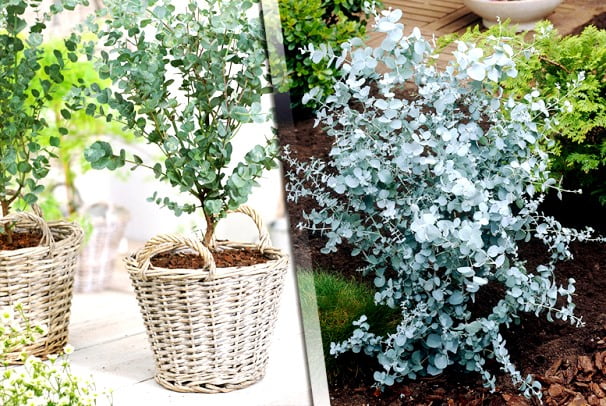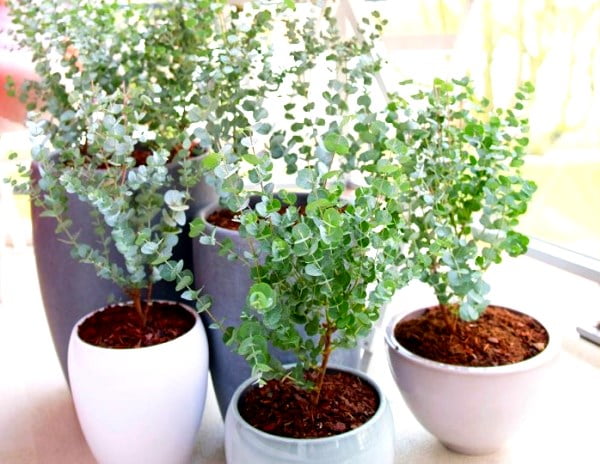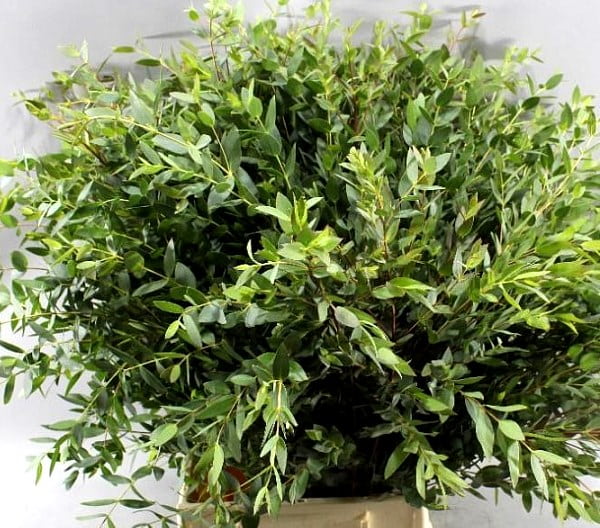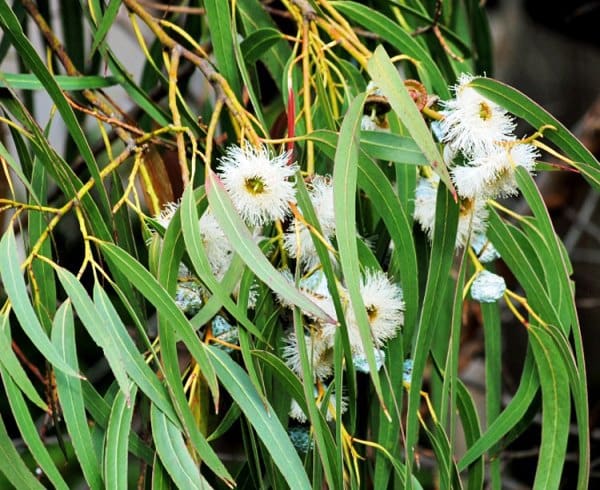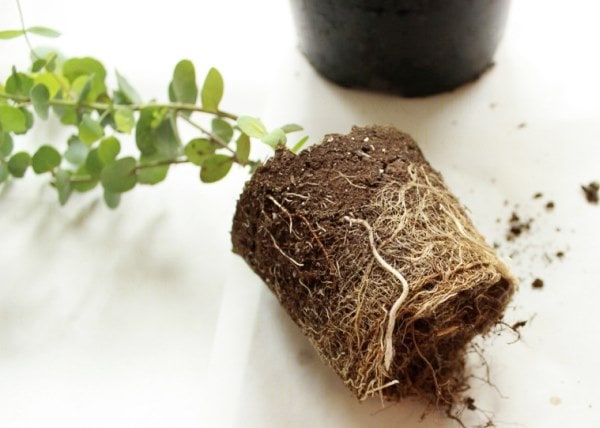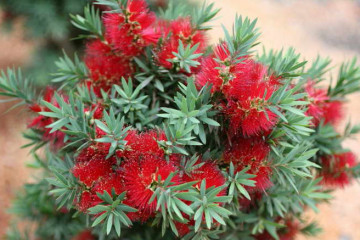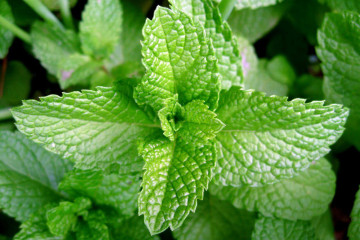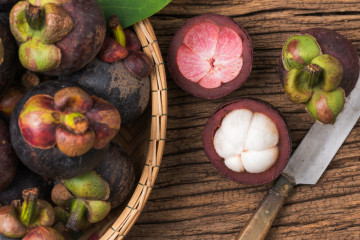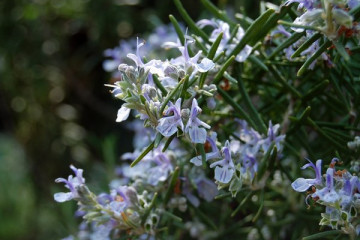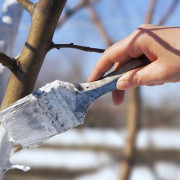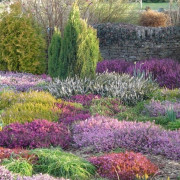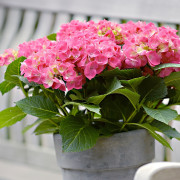How to grow lemon eucalyptus at home
Content:
Lemon eucalyptus is a perennial with an expressive aroma that smells just like lemon. Thanks to its beautiful large leaves, it looks very impressive and, in addition, has a lot of medicinal properties. Growing lemon eucalyptus is considered a popular activity among flower growers, and even a beginner can take care of it.
Description and characteristics of the plant
Lemon eucalyptus (Eucalyptus Citriodora) is an amazing evergreen tree of the Myrtle family, which is considered to be native to Eastern Australia. It prefers to grow in warm climates. Under natural conditions, it can grow up to 100 m in height. When kept indoors, the height of the plant can be easily adjusted with timely pruning and pinching. The leaves are quite dense, on the stems are arranged in a spiral. They have an oval-lanceolate shape, reach 16 cm in length, and no more than 2 cm in width.
The bark of the eucalyptus tree is white with red-brown, sometimes orange streaks. There are small growths at the bottom of the trunk.
Varieties suitable for home growing
There are many types of eucalyptus (more than 500), but only a few of them are suitable for growing as an ornamental crop. The most popular are:
- globular. It stands out for its beautiful, pyramidal crown and bluish-blue leaves, on the outside of which there is a silvery bloom;
- Gunny. Young plants have rounded gray-green leaves, which become oblong with a pointed tip as the tree matures;
- Blue baby. Refers to the dwarf species of eucalyptus. Differs in small gray-blue petals;
- fig-leaved. It stands out among other varieties with rounded small leaves;
- silvery, or ashy. The main difference is gray oval or round leaves;
- Populus is an ornamental eucalyptus that can form small berries.
There is also a very beautiful species - rainbow eucalyptus, which has a bark of various colors, similar to a rainbow, but it is not suitable for growing as a houseplant.
Healing properties
Indoor eucalyptus secretes phytoncides, which cleanse the air from viruses and bacteria.
The leaves contain an essential oil that has powerful antibacterial and antiviral properties. The leaves of the plant are used to prepare oils, infusions and alcoholic tinctures.
Eucalyptus is a house plant that is often used to treat abscesses, furunculosis, purulent mastitis, and various ulcers. Decoctions from eucalyptus leaves can be used for inhalation with acute respiratory infections and gargling for sore throats and various problems in the oral cavity.
Home care for eucalyptus as a houseplant
Eucalyptus lemon home care requires a simple one. It consists in ensuring the correct temperature regime, timely watering, making the necessary fertilizing, annual transplanting and periodic pruning.
Temperature
In summer, the most suitable temperature for eucalyptus is considered to be in the range of 20-25 ° С, in winter - 12-16 ° С. The tree needs a fresh stream of air, but during the period of airing in frosty weather, it must be sheltered from a cold draft.
Lighting
It is best to place lemon eucalyptus at home in a pot in well-lit places, for example, it can be the windowsill of the south, southeast or southwest windows. If all the windows of the apartment face north, it is necessary to apply additional illumination, since a lack of light will lead to a slower growth of the flower.
In summer, when the weather is good outside, the flower can be taken out to the balcony or terrace. During heavy rain or wind, it must be taken back to the apartment. With the arrival of autumn, the tree must be returned to the room again.
Watering
In summer, you need to make sure that the soil in the pot is always moist; watering the plant is worth once every 2-3 days with a small amount of water. In winter, eucalyptus should be watered as the top layer of the earth dries up - once every 7-10 days.
Humidity
In the summer season, indoor eucalyptus needs humid air, but since the plant cannot be sprayed, you can maintain the required level of humidity by placing the pot in a pan with water. In this case, the tree will take as much water as it needs.
Priming
For proper development and good growth, eucalyptus must be planted in soil rich in mineral components. You can buy a ready-made substrate, or you can cook it at home. The composition of the soil should include: humus (20%), turf (40%), river sand (20%) and dry peat (20%). The soil should be loose and well-drained.
Top dressing
During the active growing season, indoor eucalyptus must be fertilized periodically. Complex mineral fertilizers and organic matter can be used as top dressing. Top dressing should be carried out every 14-20 days. Top dressing is carried out immediately after watering. The amount of fertilizer applied is calculated according to the instructions.
When and how it blooms
In its natural habitat, eucalyptus blooms in spring and summer with small snow-white flowers with a huge number of stamens collected in umbrella-shaped inflorescences. Indoor lemon eucalyptus blooms very rarely at home.
Pruning at home
If you do not prune the shoots, the tree will stretch very much in height. To form a lush, beautiful crown, an annual spring pruning is carried out. In the process of trimming, the central trunk is shortened to the required height. After pruning, the eucalyptus will release young shoots, forming a lush bush. Pinch young shoots, this is necessary for the formation of young shoots. Using this method, you can form the crown of a plant of the required size and shape.Mature plants need root pruning at the time of transplanting to help limit the height of the trunk.
How to propagate yourself
You can grow lemon eucalyptus from seeds, as well as by rooting apical cuttings.
Germinating seeds
How to Grow Lemon Eucalyptus Using Seeds:
- Pour a drainage layer on the bottom of the planting container, and soil on top.
- Pour the seeds of lemon eucalyptus Ozone, slightly pressing them into the ground, pour warm water.
- Cover the container with glass or foil, put in a warm place for germination.
- Every day, the plantings need to arrange ventilation, removing the shelter and removing the accumulated condensate.
- The first shoots can be seen in 7-10 days. When the first shoots hatch, the shelter must be removed.
- When 3-4 real leaves appear, dive into separate small pots.
- When young plants grow to a height of 15-20 cm, transplant into a large pot.
Rooting cuttings
Step-by-step process of rooting cuttings:
- In an adult plant, several young shoots 10-12 cm long are cut off, all lateral leaves are removed.
- The cut is treated with a root growth stimulant.
- The sprouts are planted in prepared soil.
- Cover with foil and place in a warm place.
- It will take 3-4 weeks for rooting.
- When the cutting takes root small, it is transplanted to a permanent place.
Transfer
A young eucalyptus during the period of active growth requires an annual transplant. The most suitable time for this is spring, when new leaves are actively growing.
The transplant is done as follows:
- The eucalyptus is pre-watered to make it easier to remove from the old pot.
- A larger pot is prepared.
- At the bottom of the container, drainage is made about 5 cm thick, and a small layer of earth is poured on top.
- The tree is removed from the old pot, lightly shaking off the old soil from the roots.
- Examine the entire root system, cutting off all damaged and rotten roots.
- The cut points are sprinkled with charcoal or activated charcoal.
- The plant is placed in a pot vertically, add earth.
- Pour with warm purified water.
An overgrown plant needs a new spacious pot so that the roots do not suffer from the tight space. After transplanting or planting, the plant goes through a period of adaptation, so it must be removed away from bright sunlight and not fed for one week.
Possible growing problems
Improper care can cause illness and even death of the plant. If the process of caring for eucalyptus is disrupted, such problems may appear:
- in low light, the stems will stretch strongly in height, the leaves will decrease in size and change their color to a less saturated color. To solve the problem, it is necessary to move the flower to a brighter place or arrange additional lighting, especially in winter, when the daylight hours are short. It is also worth doing in summer in cloudy weather;
- with insufficient watering on the eucalyptus, the leaves will dry and fall off. In this case, it is necessary to adjust the irrigation mode;
- Direct sunlight on leaves and insufficient watering can cause burns. During the midday heat, it is worth shading the eucalyptus and moisturizing in a timely manner;
- excessive moisture can lead to stagnation of water in the soil, rotting of the root system, softness and leaf fall.
Diseases and pests
Due to the high content of phytoncides, lemon eucalyptus is highly resistant to various types of diseases. Also, due to the smell, many pests bypass it. But if the rules of care are not followed, spider mites or scale insects may appear. You can fight them with a damp sponge dipped in soapy water.If such actions did not lead to anything, you need to treat the plant with insecticides.
Lemon Eucalyptus is a fragrant evergreen that is great for home growing and requires little maintenance. It is easy to grow eucalyptus at home, because the rules of care are extremely simple. This flower can create a pleasant scent in the room and purify the air, as well as quickly cure winter colds.
